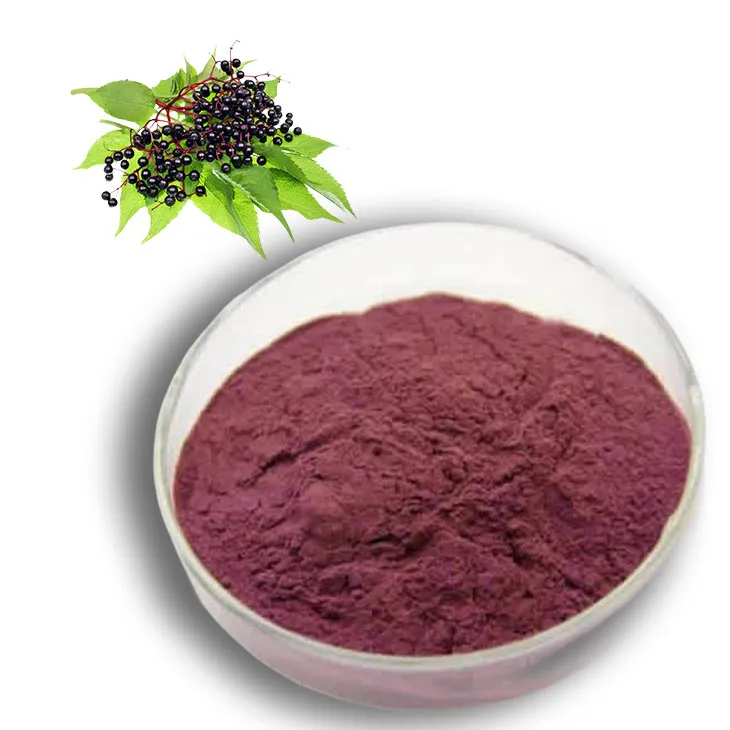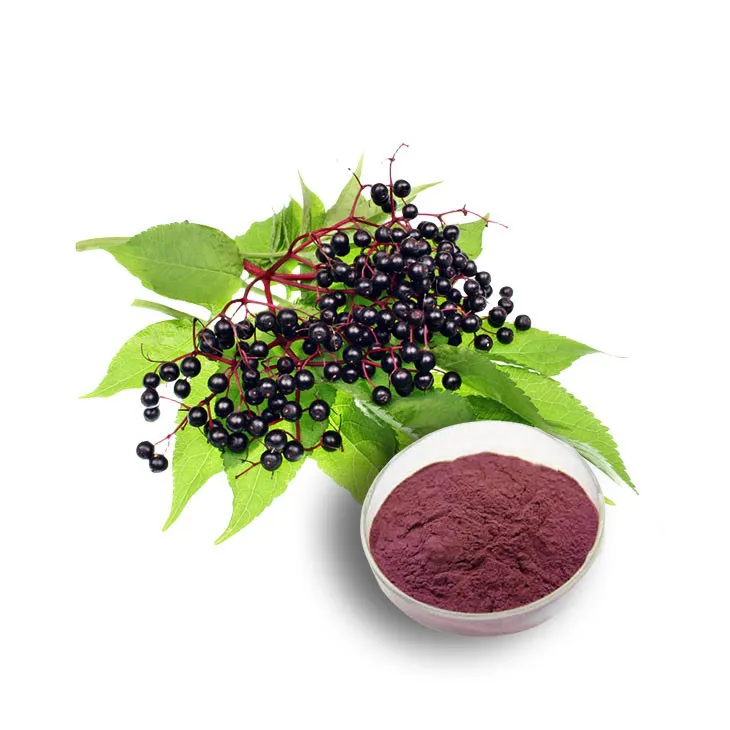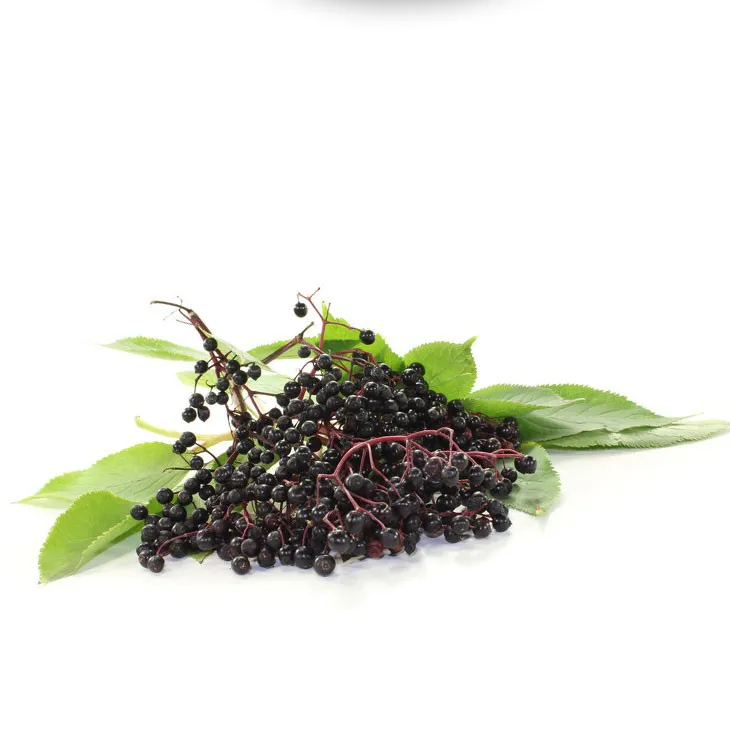- 0086-571-85302990
- sales@greenskybio.com
Elderberry extract: China vs. the United States.
2024-11-29

1. Introduction
Elderberry Extract has been gaining significant attention in both China and the United States in recent years. This extract is derived from the elderberry, which is rich in nutrients and bioactive compounds. The purpose of this article is to conduct an in - depth analysis of the similarities and differences between China and the United States in terms of Elderberry Extract, covering aspects such as health benefits, market applications, and regulatory supervision.

2. Health Benefits
2.1 In China
In China, Elderberry Extract is recognized for its antioxidant properties. Chinese traditional medicine also suggests that it may have certain effects on boosting immunity. Some studies in China have indicated that the polyphenols in elderberry extract can help scavenge free radicals in the body, which is beneficial for preventing cell damage. Additionally, it may play a role in improving digestion and reducing inflammation in the digestive tract. For example, in some traditional Chinese medicine prescriptions, elderberry - related ingredients are used to relieve symptoms such as abdominal distension and indigestion.
2.2 In the United States
In the United States, elderberry extract is widely promoted for its potential in fighting off colds and flu. It is believed to enhance the immune system's response, especially during the cold and flu season. Research in the US has shown that elderberry extract can stimulate the production of cytokines, which are important for the body's immune defense. Moreover, it has been studied for its possible anti - viral properties. For instance, some experiments have suggested that it may inhibit the replication of certain viruses, such as influenza viruses. However, it should be noted that while these potential health benefits are being explored, more conclusive scientific evidence is still needed in some areas.

3. Market Applications
3.1 In China
- Food and Beverage Industry: Elderberry extract is used in the production of some functional foods and beverages. For example, it can be added to fruit juices, making them not only more flavorful but also potentially providing additional health benefits. Some health - conscious consumers in China are attracted to these products.
- Cosmetics Industry: In the cosmetics field, elderberry extract is incorporated into some skin - care products. Due to its antioxidant properties, it is believed to help protect the skin from environmental damage, such as pollution and UV radiation. Products containing elderberry extract may claim to have anti - aging and skin - rejuvenating effects.
3.2 In the United States
- Dietary Supplements: The United States has a large market for dietary supplements, and elderberry extract is a popular ingredient in this area. It is sold in various forms, such as capsules, tablets, and liquid extracts. Consumers often take elderberry supplements to support their immune system or as a preventive measure during the flu season.
- Natural Health Products: Elderberry extract is also used in the production of natural health products. These products may combine elderberry with other herbs and nutrients to target specific health conditions. For example, some products are formulated for respiratory health, leveraging the potential benefits of elderberry extract for the immune and respiratory systems.

4. Research and Development
4.1 In China
China has been increasing its research efforts on elderberry extract in recent years. Chinese researchers are focusing on exploring the chemical composition of elderberry extract more comprehensively. They are using advanced analytical techniques to identify and quantify the various bioactive compounds present in the extract. Additionally, research is being conducted on how to optimize the extraction process to obtain a higher - quality and more effective extract. Some Chinese universities and research institutions are collaborating with local enterprises to develop new products based on elderberry extract.
4.2 In the United States
In the United States, research on elderberry extract is mainly driven by the private sector, especially pharmaceutical and dietary supplement companies. They invest in research to develop new products and improve existing ones. The research in the US often focuses on clinical trials to prove the efficacy of elderberry extract in treating or preventing certain diseases. For example, some companies are conducting trials to investigate the effectiveness of elderberry extract in reducing the severity and duration of colds and flu. However, compared to some other areas of natural product research, the overall research funding on elderberry extract in the US may still be relatively limited.
5. Production
5.1 In China
- Raw Material Sources: In China, elderberries are mainly sourced from domestic cultivation. Some regions with suitable climates are gradually expanding their elderberry cultivation areas. This helps to ensure a stable supply of raw materials for the production of elderberry extract.
- Production Scale and Technology: The production scale of elderberry extract in China is growing steadily. Chinese producers are constantly upgrading their production technology, adopting modern extraction methods such as supercritical fluid extraction and enzymatic extraction. These methods can improve the extraction efficiency and the quality of the extract.
5.2 In the United States
- Raw Material Sources: In the United States, elderberries are sourced both from domestic cultivation and imports. Some small - scale farmers grow elderberries, but a significant amount of elderberries are also imported from other countries to meet the market demand.
- Production Scale and Technology: The production of elderberry extract in the United States is also on an upward trend. American producers are known for their advanced technology in quality control and standardization. They use strict quality control measures to ensure the purity and potency of the extract, which is important for the dietary supplement and natural health product markets.
6. Consumption Trends
6.1 In China
- Growing Awareness: With the increasing popularity of health - conscious lifestyles in China, more and more consumers are becoming aware of elderberry extract. However, compared to some more well - known traditional Chinese herbal extracts, the awareness level is still relatively low.
- Urban - Rural Differences: There are significant differences in the consumption of elderberry extract between urban and rural areas in China. In urban areas, where consumers have higher incomes and more exposure to new health concepts, the consumption of products containing elderberry extract is relatively higher.
6.2 In the United States
- Seasonal Influence: In the United States, the consumption of elderberry extract is often influenced by the cold and flu season. During this time, the sales of elderberry - based products, especially dietary supplements, tend to increase significantly.
- Consumer Groups: Different consumer groups in the US have different levels of acceptance of elderberry extract. For example, health - conscious individuals and those who prefer natural remedies are more likely to consume elderberry - related products.
7. Regulatory Supervision
7.1 In China
- Food and Beverage Applications: When elderberry extract is used in the food and beverage industry in China, it is subject to food safety regulations. These regulations ensure that the extract is safe for consumption and that the products containing it meet quality and labeling requirements.
- Cosmetics Applications: In the cosmetics industry, elderberry extract - containing products need to comply with cosmetics regulations. This includes requirements for ingredient safety, product quality control, and proper labeling.
7.2 In the United States
- Dietary Supplements: In the United States, elderberry extract in dietary supplements is regulated by the Dietary Supplement Health and Education Act (DSHEA). Under this act, supplement manufacturers are responsible for ensuring the safety and proper labeling of their products. However, the regulatory requirements are not as strict as for drugs.
- Natural Health Products: For natural health products containing elderberry extract, they also fall under the general regulatory framework for dietary supplements in the US, with some additional requirements depending on the specific nature of the product.
8. Conclusion
In conclusion, elderberry extract shows both similarities and differences in China and the United States in terms of health benefits, market applications, research and development, production, consumption trends, and regulatory supervision. Both countries recognize the potential value of elderberry extract, but their approaches are shaped by their respective cultural, economic, and regulatory environments. As the global interest in natural products continues to grow, further cooperation and exchange between China and the United States in the field of elderberry extract may lead to more innovation and development in this area.
FAQ:
What are the main health benefits of elderberry extract in China?
In China, elderberry extract is believed to have certain antioxidant properties. It may also contribute to immune system support to some extent. Some studies suggest that it could help in relieving inflammation in the body, which is beneficial for overall health.
What are the major market applications of elderberry extract in the United States?
In the United States, elderberry extract is widely used in the dietary supplement market. It is often formulated into various supplement products such as capsules and syrups. Additionally, it can be found in some functional foods and beverages, especially those targeting immune - boosting or antioxidant - related claims.
How does the regulatory environment for elderberry extract differ between China and the United States?
In China, elderberry extract, as a food - related product, is subject to strict regulations on food safety and quality. It needs to meet certain standards regarding raw material sourcing, production processes, and labeling requirements. In the United States, the regulatory framework mainly focuses on dietary supplements. While there are regulations to ensure safety and proper labeling, the approach may be different from that in China in terms of specific requirements and enforcement mechanisms.
Are there differences in the R & D trends of elderberry extract between the two countries?
Yes, there are differences. In the United States, there is more emphasis on exploring new formulations and delivery methods for elderberry extract in the dietary supplement market. Research often focuses on enhancing its bioavailability and efficacy. In China, R & D may be more inclined towards integrating elderberry extract into traditional Chinese medicine - inspired products or exploring its potential in combination with other natural ingredients, with a view to developing products that are more in line with the domestic consumer's health concept.
What are the consumption trends of elderberry extract products in China?
In China, the consumption of elderberry extract products is gradually increasing. Consumers are becoming more aware of natural health products. Elderberry extract - based products are often favored by those who are interested in immune - boosting and antioxidant - rich products. However, compared to the United States, the market penetration is still relatively lower, and the consumption is mainly concentrated in some urban areas with higher health awareness.
Related literature
- Elderberry Extract: A Comprehensive Review of Its Properties and Applications"
- "Regulatory Aspects of Herbal Extracts in the United States and China: A Case Study of Elderberry"
- "The Market Potential of Elderberry Extract in the Global Context: Focus on China and the United States"
- ▶ Hesperidin
- ▶ citrus bioflavonoids
- ▶ plant extract
- ▶ lycopene
- ▶ Diosmin
- ▶ Grape seed extract
- ▶ Sea buckthorn Juice Powder
- ▶ Beetroot powder
- ▶ Hops Extract
- ▶ Artichoke Extract
- ▶ Reishi mushroom extract
- ▶ Astaxanthin
- ▶ Green Tea Extract
- ▶ Curcumin Extract
- ▶ Horse Chestnut Extract
- ▶ Other Problems
- ▶ Boswellia Serrata Extract
- ▶ Resveratrol Extract
- ▶ Marigold Extract
- ▶ Grape Leaf Extract
- ▶ blog3
- ▶ blog4
-
Chinese Oyster Peptide Powder Factories.
2024-11-29
-
The best organic L - carnitine.
2024-11-29
-
Certified organic acerola cherry extract.
2024-11-29
-
Wholesale β - carotene suppliers.
2024-11-29
-
Chinese lemon balm extract factories.
2024-11-29
-
100% Pure Organic Bitter Melon Extract.
2024-11-29
-
100% Pure Natural Yellow Pine Extract.
2024-11-29
-
Lavender Extract
2024-11-29
-
Alfalfa Meal
2024-11-29
-
Curcuma Longa Extract/Turmeric extract
2024-11-29
-
Rose Hip Extract
2024-11-29
-
Acerola Juice Powder
2024-11-29
-
Maca Extract
2024-11-29
-
Beta Carotene
2024-11-29
-
Grapefruit Seed Extract Powder
2024-11-29
-
Dan Shen Root Extract/Salvia Root Extract
2024-11-29
-
Genistein
2024-11-29





















